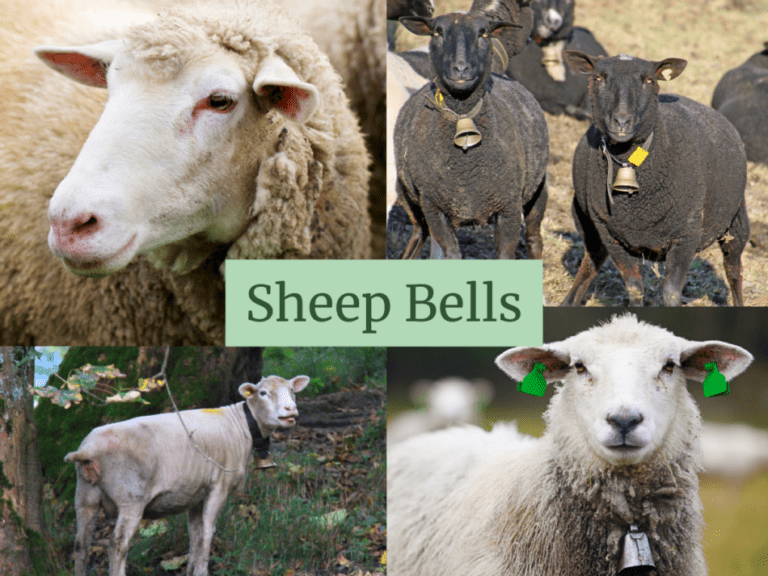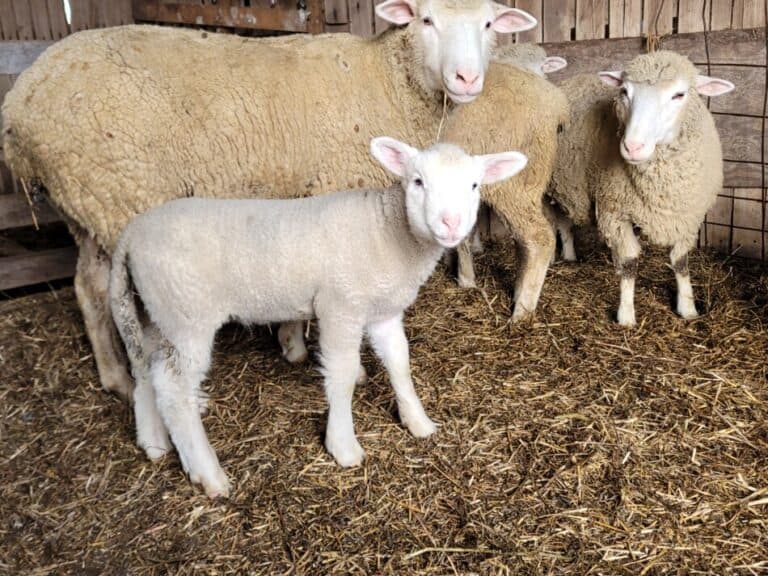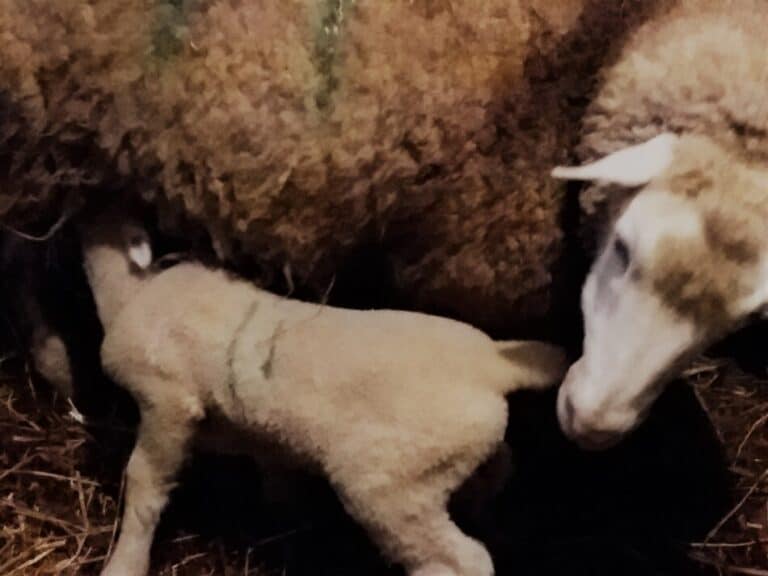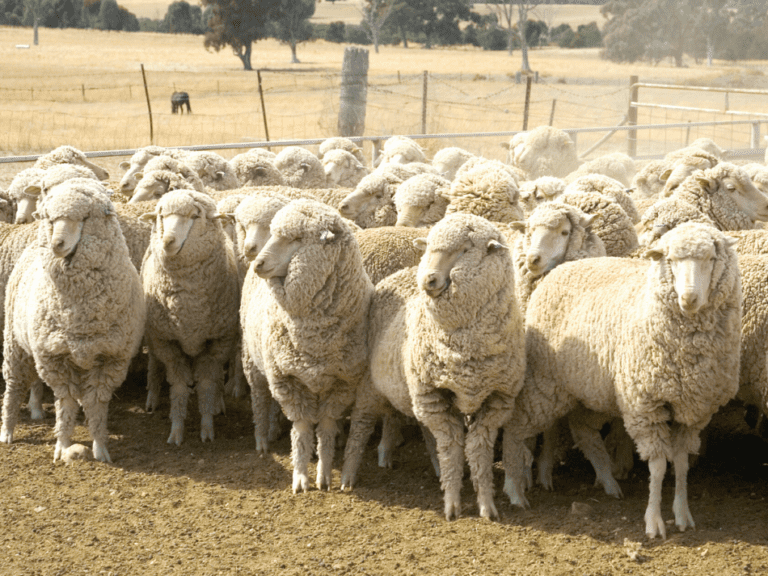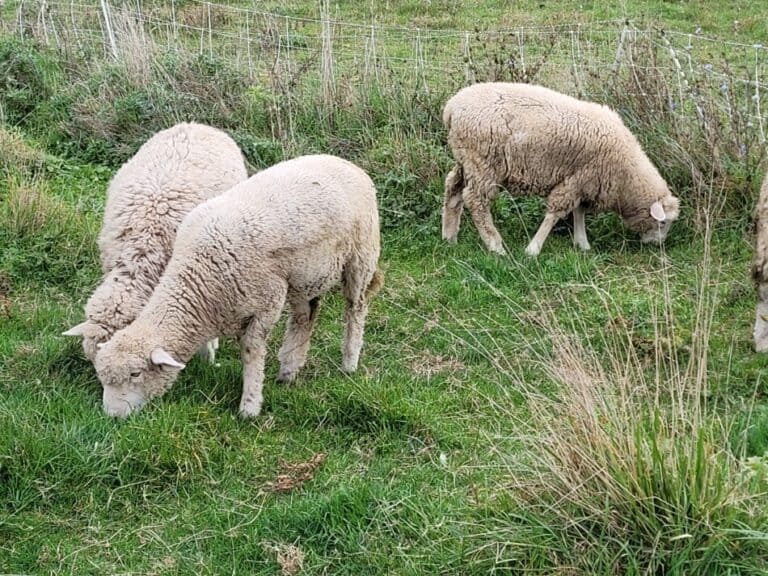11 Breeds of Sheep With Black Faces: How Many Do You Know?
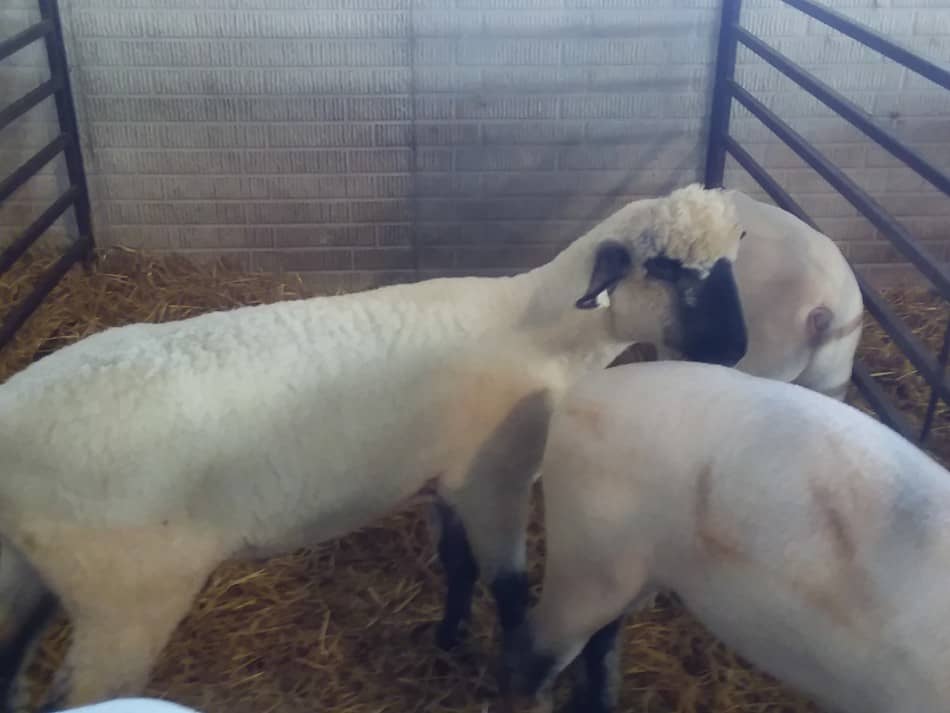
Why do some people raise sheep with black faces? Are they any different than sheep with white faces? Let’s look into some breeds.
Sheep breeds with black faces include: Suffolk, Hampshire, Shropshire, Black Welsh Mountain, Dorper, Karakul, Romanov, Scottish Blackface, Clun Forest, Valais Blacknose and Swartbles.
Any sheep can have a black face if it gets those genes from it’s parents. Both wool type sheep and meat type sheep can have black faces.
Generally speaking, sheep with black faces are from breeds that are fast growing and will produce a meatier lamb to sell.
This would also be the type of sheep that kids show at county and state fairs in the market lamb classes.
Raising Sheep For Profit is an article I wrote showing you how to figure up the potential profits from raising sheep as a business. If you are interested in the numbers, check it out and see if raising sheep would work for you!
People have sheep both black and white faced for many reasons from fun, family activities to the main family income. Click here for my article listing out reasons why in our modern world people still choose to keep sheep.
Here is a list of some black faced sheep breeds. There are many more black faced breeds the world over, this is just a small selection to give an idea of the variety worldwide.
I have kept the breeds in three sections listed (from an American perspective) as common meat breeds, breeds found in the U.S. but not so common, and breeds are not in the U.S.
Black faced sheep breeds
- Suffolk
- Hampshire
- Shropshire
- Black Welsh Mountain
- Dorper
- Karakul
- Romanov
- Scottish Blackface
- Clun Forest
- Valais Blacknose
- Zwartbles
Suffolk sheep are popular for showing
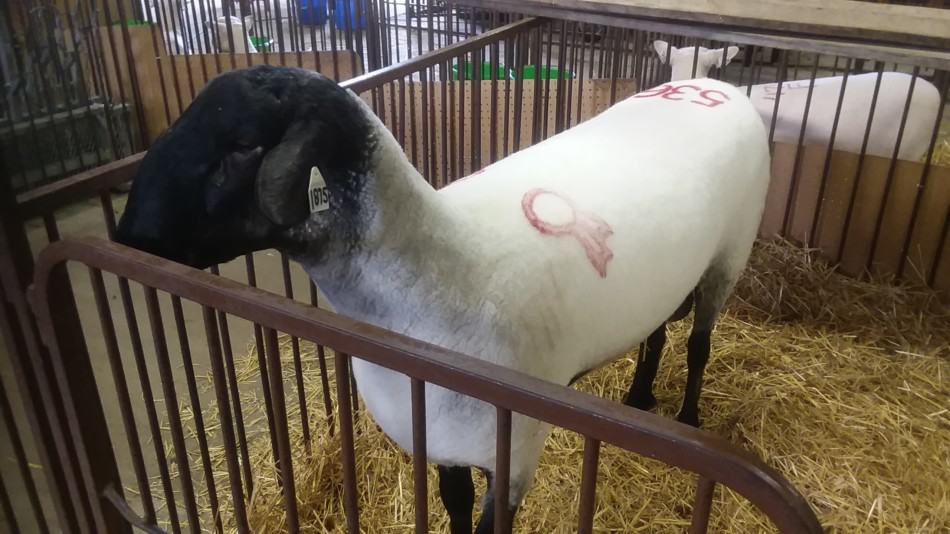
Common in U.S.
The Suffolk sheep is the most popular meat breed in the U.S. first imported to New York in 1888.
Suffolk sheep have black head and legs but no wool on the top of the head or down the legs and minimal wool on the underside of the belly.
These are the most common ram used to produce show lambs for fairs because of their longer legs, muscular body and attractive black head.
Suffolks are large, fast growing sheep with a great rate of gain when well fed.
A Hampshire sheep has a wool cap on it’s head
Common in U.S.
The Hampshire is a large meat breed sheep from Hampshire, England. Strictly speaking they have a chocolate brown (not black) face.
The main selection criteria for Hampshire breeding stock is the ability to efficiently convert forage into meat.
These lambs are fast growers with a high quality carcass. Hampshire sheep are adaptable and productive in many areas of the U.S.
The fleece is relatively short, medium wool. This breed has a cap of wool on it’s head, not extending below the eyes.
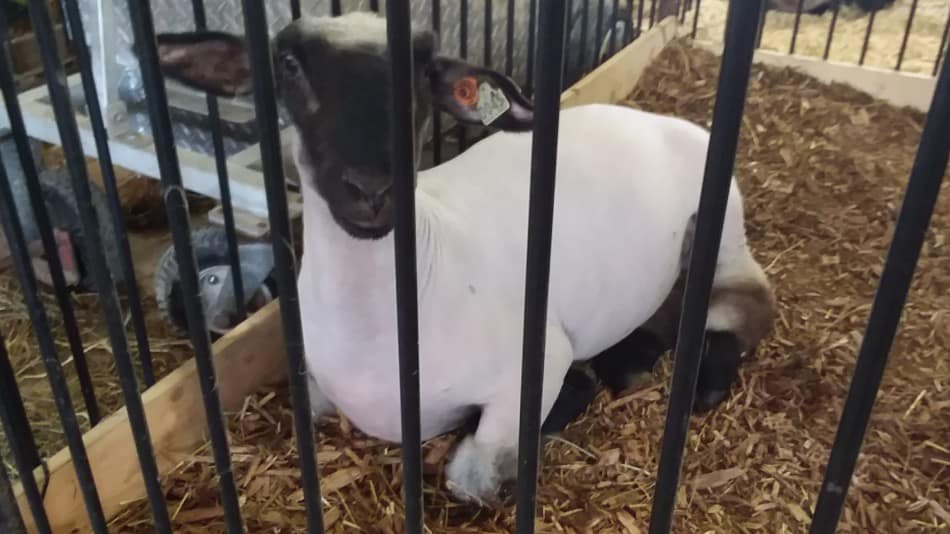
Shropshire was very popular in the 1930’s
Common in U.S.
The Shropshire is a black faced sheep originally from the counties of Shropshire and Staffordshire in England.
Shropshires have been an established breed since 1848 and were first imported to the U.S. in 1855.
These sheep were so popular because of their ability to adapt to grazing conditions, hardiness, short fleece to shed snow, and longevity. In the 1930’s Shropshires were the most popular sheep breed in the U.S.
Shropshire sheep are medium sized, structurally sound (this means having a body structure that will last) and meaty.
Shropshire sheep tend to be gentle, prolific and good mothers.
Black Welsh Mountain are solid black
Found in U.S. but not as common
The Black Welsh Mountain is a small very hardy sheep from the high mountain valleys of South Wales.
This is an old breed popular in the Middle Ages for excellent mutton and still known today for carcass quality. While these sheep are popular in the United Kingdom they did not make it over to America until 1972.
As the name suggests these sheep are black with no wool on the face or below the knees. These sheep are known for easy lambing and fast lamb growth.
Since they are an active, more independent sheep -qualities that make them great take care of themselves sheep-they will be less tame and harder to fence.
Black Welsh Mountain sheep have a fleece that is 4 inches long that is a beautiful solid black that is becoming more popular with handspinners.
Dorper sheep are hair (not wool) sheep
Found in U.S. but not as common
The Dorper breed is a sheep breed very popular is South Africa-this is also where the breed originated.
Blackhead Persian sheep were crossed with Dorsets to get a meaty sheep that will do well in a warmer climate.
The Dorper is very fertile, has a long breeding season and are docile.
Dorper lambs grow quickly to weaning weight because of it’s ability to start grazing at a young age.
These are hair sheep so they do not need to be shorn. In the winter Dorpers will put on a slightly wooly coat that it will shed out in the spring.
Because they have such thick skin the Dorper has a more valuable sheep skin than most breeds at 20% of total carcass value in some cases.
Interestingly enough, not all Dorpers have a black face! About 15% of the breed is naturally white both the face and the body.
In our area, Ohio, Dorpers are seeing a huge amount of interest. Lots of folks are considering getting into sheep, with Dorpers as a favorite, especially among the Amish.
Karakul lambs are born black
Found in U.S. but not as common
The Karakul is native to central Russia and is thought to be one of the oldest breeds in the world.
Karakuls are small long lived sheep with drooping ears. These sheep are hardy and adaptable to a wide variety of climates. Karakul sheep have strong teeth and are resistant to foot rot and parasites.
Single lambs are normal for a Karakul. Lambs are born black and turn lighter as they age. There are some lambs born blue or red but black is most common.
Karakul wool is long and generally thought of as carpet wool. Some handspinners like to use it because of the long fibers and the fact that this wool felts well.
Occasionally a Karakul is white, but more normal fleece colors range from silver to reddish to white with others colors flecked through out.
Romanov sheep are prolific, year round lambers
Found in U.S. but not as common
The Romanov sheep first came to North America in 1980 imported to Canada.
These sheep were traditionally raised for pelts in the Volga Valley northwest of Moscow, Russia.
Romanov sheep are famous for early maturity and high birth rates-multiple lambs are normal.
This breed can have lambs year round even as often as every eight months. Lambs are born black and turn light grey as they age.
Scottish Blackface are very popular in British sheep production
Found in U.S. but not as common
The Scottish Blackface sheep is a hardy hill breed from the mountains of Scotland.
These sheep are very popular in the less hospitable sheep raising areas of the British Isles since these are hardy, fast growing sheep that do well on sparse forage.
Ewes are good moms but need a bit more feed to produce and care for twins than they will normally get in the harsher mountain areas.
Scottish Blackface are an impressive looking breed with a long fleece, dark speckled face and horns on both rams and ewes.
Clun Forest sheep are becoming more popular
Found in U.S. but not as common
The Clun Forest sheep are from the ancient town of Clun in the mountainous area outside of Shropshire, England.
The first Clun Forest sheep were imported in 1959 with larger importations in the 1970’s.
Clun Forest sheep were bred to thrive on grass, be hardy, have high fertility and be easy lambing -they regularly have twins.
They have a medium wool that can be used for handspinning.
Clun Forest sheep are also known for longevity tending to live productively for 10-12 years.
Valais Blacknose are interesting looking sheep
Not currently* in U.S. however in 2016 some semen was imported to the U.S. to use in an upgrading program.
*Update: Our shearer was here on April 1 & 2, 2023 and said that he has shorn a few 100% Valais Blacknose (from embryo transfer) and multiple grade ups (50% +) so this breed is currently in the U.S.
The Valais Blacknose are an old breed from the Valais region of Switzerland.
These sheep have black nose, ears, eye rims (making them look like they have two black eyes obtained in a fight of some sort) and black knees and ankles. Rams and Ewes both have horns.
Look these up if you get a chance they are darling!
Valais Blacknose sheep are know for being very hardy and good grazers in the rough, rocky areas of their homeland.
These sheep were only found in Switzerland for hundreds of years then in 2014 some foundation stock was imported to the United Kingdom and in 2016 semen was imported to the U.S. to use in an upgrading program.
There is an American organization registering percentage sheep-the Valais Blacknose Sheep Society.
As of this writing, a third generation breeding, 87.5% Valais Blacknose, can be registered as a Valais Blacknose sheep versus a sheep upgrading to Valais Blacknose, which is registered as Recorded.
I could not find any definitive information on the importation of frozen embryos, which if purebred (100% Valais Blacknose) embryos were used, that would make the resulting lambs 100% Valais Blacknose.
As mentioned in the update above, there are a few 100% Valais Blacknose sheep in the U.S. now (2023), resulting from embryo transfer.

Zwartbles are black bodied with a white blaze
Not currently in U.S.
The Zwartbles sheep is a black sheep famed for top notch mothering ability.
The name Zwartbles comes from Zwart=black and Bles=blaze which is the white stripe down the sheep’s face.
They were first imported from Holland in the 1990’s to the United Kingdom and Ireland. Both rams and ewes are polled (no horns).
Zwartbles fleece is medium to fine with excellent crimp and length making it a good handspinning choice.
These sheep are known for being docile, great moms and are easy to lamb. These are a triple purpose sheep being used for meat, milk and wool.
Resources for this article:
Oklahoma State University Department of Animal Science website, very extensive, check it out! Anytime I’m looking into a new breed of sheep that I am wondering about, I look here first. They have consistently maintained the most complete animal breed site I have found.
Stories Guide to Raising Sheep by Paula Simmons and Carol Ekarius.
Related Questions
Are there real black sheep?
Yes there are real black sheep-Black Welsh Mountain and Zwartbles as two easy examples.
Are any lambs born black?
Suffolk, Karakul and Romanov are three sheep breeds producing lambs that are born black.
